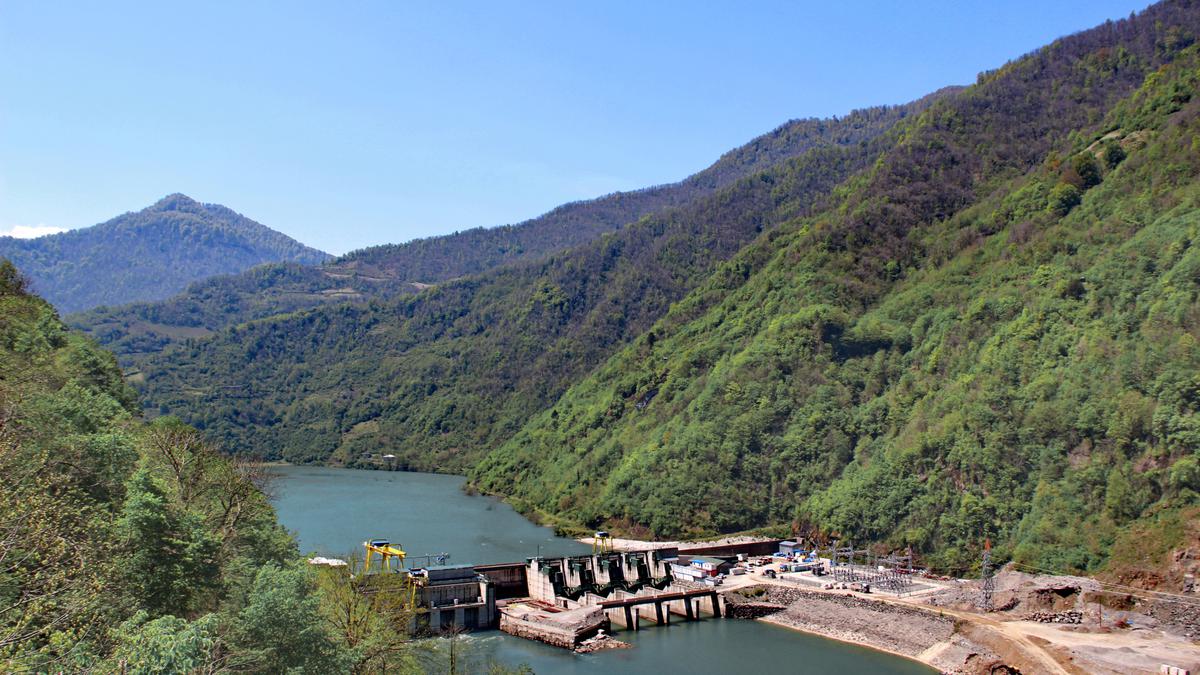
Sights of Georgia - ancient fortresses of Adjara, Gvara on the Chorokhi River
The walls of the fortress of Gvara, located in Adjara, have preserved the memory of the past centuries and wars that protected the country from enemy raids. Gvara is one of the sights of Georgia...
The Gvara Fortress (Adjara, Khelvachauri Municipality, Makhachela National Park) is an impregnable fortress towering over the river. For many centuries it has been an important strategic object. Built in the 6th century AD, the fortress still keeps many secrets about the life and military glory of its inhabitants. The fortress is located 300 meters from the arrow of the Machakhlistkali and Chorokh rivers.
For some time, Gvara served as a control center for the roads of the Chorokhi River and Machakhela as a water gorge. Also, the fortress continued the chain of defensive fortresses for a long time. It is even often mentioned about the role of the fortress as a full-fledged prison, in which guilty soldiers and prisoners were kept for a long time. Gvara is located at the foot of a towering mountain and above the confluence of the exuberant Chorokhi and Machakhela rivers.
In the fortress, a fascinating and majestic view of the “fruits of nature" opens in front of you. The structure covers an area of 150 square meters. On the territory of the fortress there is nothing but dilapidated structures. The north-eastern edge of the building has mostly been preserved. Only here there is a single aligned (in shape) place, and everything else is a steep cliff.
It is proved that the fortress has always been updated and has always been amazing. An example of frequent updating is the size and material of stones (60x48cm; 74x110cm; 60x10cm; 1.66 x 64cm). Also, the detail of the wall itself is similar in nature to the laying of the wall of the Gonio fortress. The main part of the fortress is late. It is built of hewn stone and partly cobblestone.
The laying is not horizontal, only here there are more elongated squares. These correct facts help specialists to accurately date the construction of the fortress and the date of its renewal. According to research, it is clear that the fortress functioned in the 10th-18th centuries. Due to the deplorable condition of the building, it was impossible to determine the exact direction of the entrance to the prison itself.
But it is believed that they ascended to the fortress with the help of a long wooden ladder. To the north and south of the fence are the remains of several buildings. Two buildings have been preserved on the north side. One is triangular in shape - its area is 5 m2. It is followed by an incorrect construction of a quadrangular building with an area of 13.5 m2.
The walls of this structure have a thickness of 1.40-1.50 m, and the fence for the fortress is a wall that has survived to this day, with a height not exceeding from 3 to 6 meters. There is also a shallow well in the triangular (shaped) zone. Its depth is 2.80 m and its diameter is 0.75 m.
Everyone will easily guess that for centuries this well was overflowing with mud, leaves and stones, which contributed to the clogging of the well. Any well needs to be filled with water, and in this fortress, as well as in the fortress of Chkhutuneti, located not far from it, this was done with the help of the Machakhela River.
Location of the fortress “Gvara”
Almost like all medieval fortresses located on the territory of present-day Georgia, Gvara is located above a wide emerald-colored river. The fortress seems to be in the arms of the wild. Clinging tightly to it, nature gave the fortress and its visitors a delightful view. The location of this fortress is very easy to find.
You just have to move 1 kilometer away from the main road. Then 100 meters on foot, and here you are at your destination. You can easily drive your sedan. If there are any difficulties, you should just contact the villagers. Hospitable, smiling Georgians will always be happy to help you.
Even if you are lucky, you will be taken to the fortress itself and then offered to taste homemade wine from your own beds. Because of the impregnability of the fortress, not everyone dares to look at its greatness. But we also recommend daredevils to be careful: you can't do without physical training here. Since the fortress on the cliff is a real challenge.
Everyone with children: be extremely careful and attentive. There are many dangerous steps along the walking path. Also check every inch on the way for snakes: according to the stories of visitors, they often bask on brick steps. Take also a spray or ointment from mosquitoes and insects.
There were such cases when the inhabitants of these parts treated visitors to the fortress with tea, and at this time they bought nut honey from them as a sign of gratitude (try it and you won't regret it). The only thing that upsets is that the government does not look after the fortress at all, and over time it loses its pristine appearance.
Admission is free. We recommend visiting the facility in late spring, summer and early autumn, as the climb is very steep. Therefore, in bad weather, you can slip and fall. As we believe, this is not the best start for a trip to the mountains.













29 comments
Log in to leave a comment